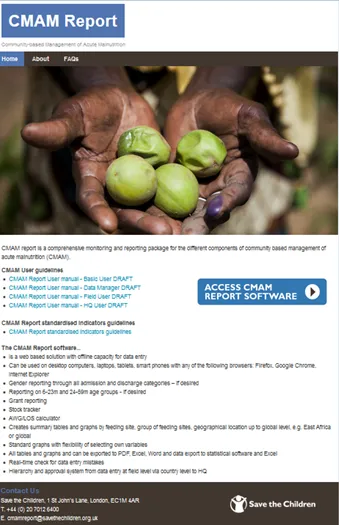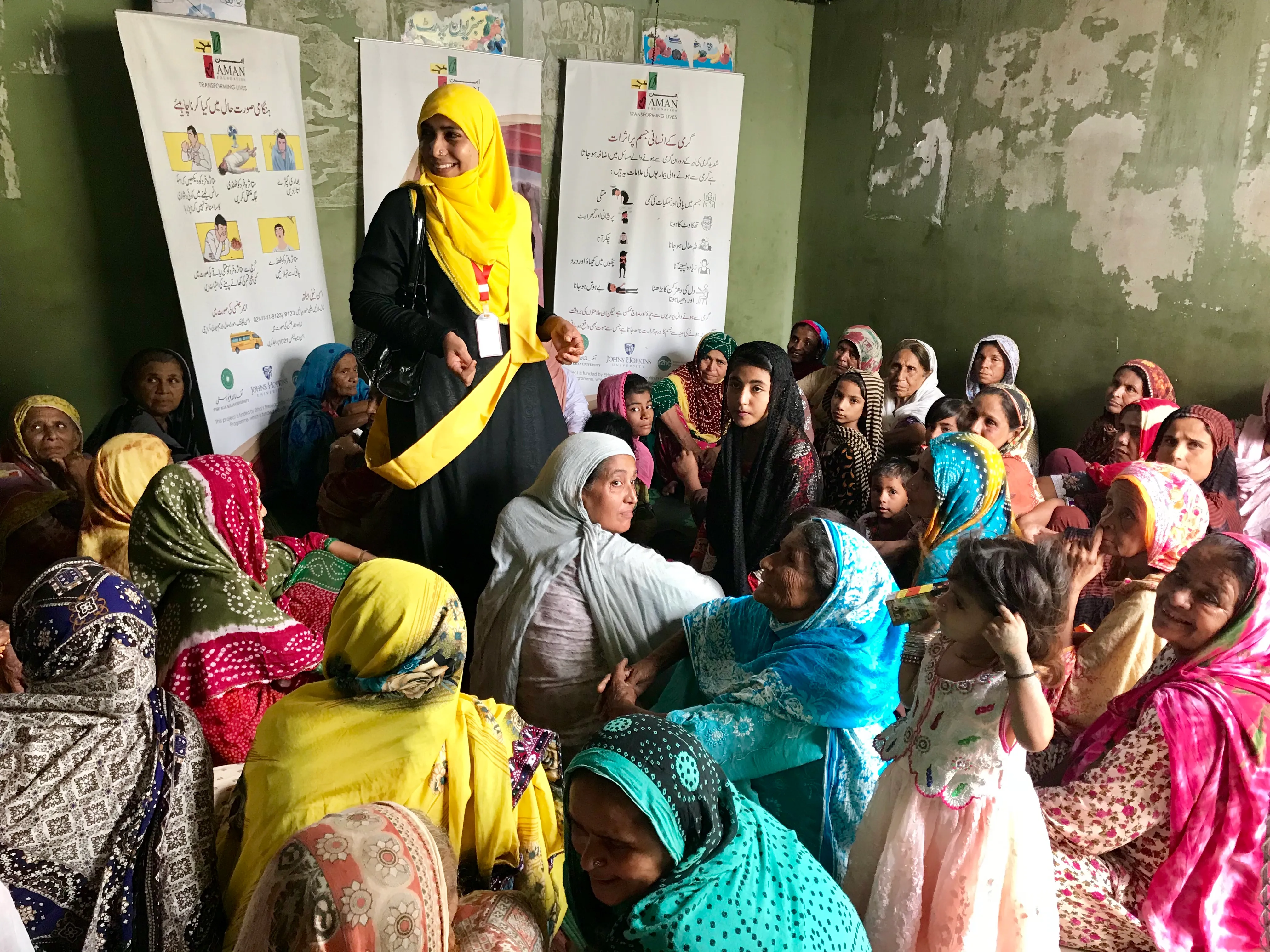Introducing CMAM Report: Reflections on how we got here

In early July (a few days post the end of our funding) we launched CMAM Report, the fully revised and updated version of the old MRP access software. The software is a comprehensive monitoring and reporting package for global reporting of all CMAM components, developed in consultation with the wider nutrition community. Previously an access based software it has now been developed into an online reporting system for CMAM with offline capability. It can be used on desktop computers, laptops, tablets, smart phones with any of the following browsers: Firefox, Google Chrome, Internet Explorer. The software supports:
- Secure data collection through controlled access from field to HQ levels
- The use of standardised indicators and reporting categories (comparable data and unbiased reporting)
- Gender and age disaggregated reporting through all admission and discharge categories – if desired
- Analysis of additional components – Feeding site or Grant level reporting, Stock tracker, AWG/LOS calculator, MUAC screening and BSFP
- Creation of summary tables and graphs by feeding site, group of feeding sites, geographical location up to global level, e.g. East Africa or global
- Export of tables and graphs to PDF, Excel, Word and data export to Excel
- Real-time check for data entry mistakes
The software, user manuals and more information can all be found on our new website using the following link www.cmamreport.com

After such a long journey and given the significance of innovation in the humanitarian sector today we would like to use this final blog for some reflection on the project and some of the lessons learnt.
Despite it not being such a smooth journey, we have achieved what we set out to do. The project was set around two main activities
- Refine existing MRP tools to increase usability and uptake of the reporting package among SFP implementing partners
- Conduct a review of targeted SFP Field Data to compare different SFP contexts and approaches to identify how best to maximise performance.
The MRP tools have been completely revised to form the comprehensive software described above, these are accompanied by a website which hosts the software and training manuals. Though the manuals have been released as a draft, steps are already being taken to plan the valuation and update of these manuals. The review is still in the final write up stage and will be released in August/September.
As mentioned in previous blogs we have faced significant stumbling blocks along the way. Our main problems were mostly related to development delays in the software, complexities in development and the challenge in defining what constitutes a change in the planning of development (and therefore is attached to additional time and cost), and adapting the development process to accommodate the changes.
The migration of data from the old software to the new software has proved incredibly challenging and was the cause of the last round of delays in releasing the software. As was already known, the data collected in the old software was quite messy and of questionable quality in some areas and therfore needed a lot of cleaning. Despite a lot of cleaning, the migration process still proved difficult as a number of problems with fitting old data into new cells were identified. Today, we are still identifying issues and continue to clean as we find them. Reassuringly, many of the issues we are identifying with old data will not be possible to recreate in the new system due to built in validation.
We defined the beneficiaries of this project as implementers of CMAM programmes. In terms of involving them in development, we have tried to maintain an open and transparent process throughout, through the facilitation of group calls and discussions and reviewing of documents. We opened the development process up fully back in May 2014 with partner user acceptance testing. Due to the limited time frame in development, we did a lot of preparation before the testing to ask people to reserve time for this testing and try to get full engagement. We did get feedback from some of our partners but despite having expressed an interest in testing, there were many agencies that did not provide feedback. We will facilitate discussions with our partners over the coming weeks to assess how we could have engaged more feedback and if they found the process open and transparent.
Moving forwards there are still components of the software under development and completion, for example the French version and the new country administrator role will be finalised in August. We are currently working under a 3 month warranty period and so have time to address issues that are identified. During the warranty period we will update manuals to reflect questions we have been asked by users, start to develop e-learning and other innovative learning modules, and work on our training site. Towards the end of the warranty when we will hopefully be more confident in the software, we will go for a global launch through recognised nutrition networks as a step towards scaling up the use of the software. In October we will present the software, findings of the analysis and lessons learnt at an international technical meeting on nutrition which will be held in Oxford, facilitated by the Emergency Nutrition Network (ENN).
In terms of development, there are outstanding items to be developed. We are currently working on reviewing and prioritising these items so that we can plan to develop and release some alongside the French version release.
Following the training of trainers we did in Nairobi in April, we are planning a West Africa version to roll out the software in French speaking countries. We will also tidy up and roll out the training materials used in these trainings through our website.
We selected an agile methodology for the software development attached to a fixed price cost. We are planning a session both internally and then with the software developers to conduct a lesson learning exercise. The idea of this is to review the methodology used, processes followed, technology available etc. and to extract lessons learnt and recommendations for any future projects similar to this, or any further development of this software. This exercise alongside some of the other assessments and lessons learnt will all feed into a briefing report which is currently being written and will be released in August/September.
If we were asked what our advice would be to someone wanting to carry out a similar project, we would pick out a few key recommendations. One is to adequately resource the project both technically and financially. We have benefited significantly from having a team fully dedicated to the development of this work rather than managing it as a side line to an already over stretched work load (even so, we have still had to reprioritise some work for example the analysis has taken longer due to development demands). The project has required flexibility in time and financial resources in order to meet needs which have evolved over time. In the world of information systems we don’t believe there is one solution that would fit everywhere. What we have learnt is that platforms which can link different systems are likely to play a vital role in facilitating more efficient ways of working in the future.
For information related to any of the above, please contact Susan Fuller at [email protected]
Stay updated
Sign up for our newsletter to receive regular updates on resources, news, and insights like this. Don’t miss out on important information that can help you stay informed and engaged.
Related articles



Explore Elrha
Learn more about our mission, the organisations we support, and the resources we provide to drive research and innovation in humanitarian response.